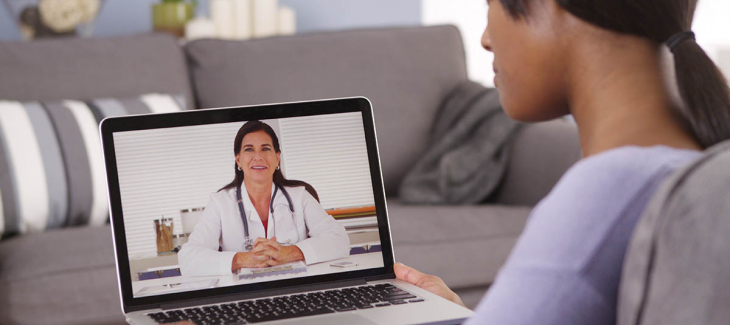- General
- Telehealth
- Dentist
- Career Trends
- Featured
- Legal
- Dentist Industry
- News and Events
- Technology
- How To
- Procedures
- Training
- Employer News
- Candidate News
Recent Posts
Most Popular
Is Teledentistry right for you?

According to the American Dental Association, 42 percent of people admit to not seeing their dentist enough. However, 85 percent of people think dental health is important. Teledentistry can help bridge the gap and improve overall oral health for your patients, especially those who might not be able to get into the clinic regularly for dental appointments.
If you’re unfamiliar with the concept of teledentistry, it combines the hands-on skill of dentistry with telecommunication. Teledentistry enables the data from digital devices to sync remotely with dentists offsite. Considering the current COVID-19 pandemic, this new healthcare delivery method could transform the way people are treated. According to HealthcareITNews "As was requested by several leading healthcare technology organizations this past week, Congress has included a provision that waives some restrictions for Medicare telehealth coverage as part of its new COVID-19 supplemental funding package." Telehealth and virtual care solutions can expand access to care and enable timely treatment, while also limiting the risk of person-to-person spread of the virus, ATA applauded the move. The recent global trends following the pandemic has started to change the way people approach healthcare, giving telemedicine a path to expand globally.
Although dental offices and dental health professionals have adapted more to the practice of teledentistry in recent years, the concept of teledentistry isn’t a new idea. Remember the age-old "house calls" physicians would make? Think of it like that, but with a digital twist that combines innovative technology. As far back as 1994, the US Army’s Total Dental Access Project demonstrated that telemedicine could be applied to the dentistry profession. The result was reduced patient care costs and extended dental care to underserved areas while providing the same diagnosis and value as an inpatient visit.
A couple of ways dental practices are using teledentistry today include live "real-time" access as well as outside the clinic walls in public health pop-up dental clinics. Mobile dental clinics bring hygienists to underserved populations, and the hygienist has access to the dentist, sharing areas of concern using intraoral cameras.
Real-time visits include follow-ups with patients face to face, like Facetime. You can speak directly to your dental patients live through patient secured software platforms.
Access to care
Teledentistry benefits every patient by helping save money, but those who have limited access, like those living in rural areas and underserved populations, benefit the most. Patients who are unable to ambulate and transfer can use teledentistry from their nursing home or bed.
And teledentistry is not only for dentists or dental practice owners. Dental hygienists open pop-up clinics equipped with a digital oral camera to evaluate and capture transferable data to an office. This is a great innovative tool to help the dentist identify preventive and treatable conditions.
Early detection
Teledentistry can also help in preventive treatment and early diagnosis of various oral health issues. For example, capturing a picture of an oral lesion can be managed by measuring and watching the growth over time. Under the guidance of the dentist, the dental hygienist can communicate and discuss treatment plans.
Although there are many benefits to teledentistry, the downside for patients is if the dentist recommends oral surgery, which would require the patient to come into the dental office. This isn’t a problem for the dental practice, but it takes away from the convenience of teledentistry.
Initial investment
There can be some hefty start-up costs associated with adding teledentistry services to your dental practice. That will also include an investment in training your dental staff on all required software, devices, and equipment. You might have some pushback from dental hygienists and other dental support staff because it is a change of practice, which is why it’s important to communicate a potential new practice or service offering with all staff members.
Legal issues
As with all telemedicine practices and healthcare technology, privacy and confidentiality are important. As the dental practice owner, you should set guidelines for both support staff and patients to ensure patient information is not shared in a public place or with open access via internet connections. Patients should be encouraged (if not required) to have a private computer or location to communicate with your dental staff rather than using a public computer at the library or coffee shop. e Dental practices can ensure patient safety and confidentiality with software designed specifically for telemedicine.
Overall, the benefits of teledentistry can lead to better dental care for patients who have limited access or are busy.
Teledentistry can be a viable option for a dental practice owner who is looking to recruit new patients. In addition to providing better dental care for rural or underserved patients who have limited access to oral care, dental practices can use the service as an opportunity to market their dental practice. A mobile clinic would offer branding wherever you’re set up. However, dental practices shouldn’t offer teledentistry as an alternative for routine in-person dental visits with a dental health professional.








Comments